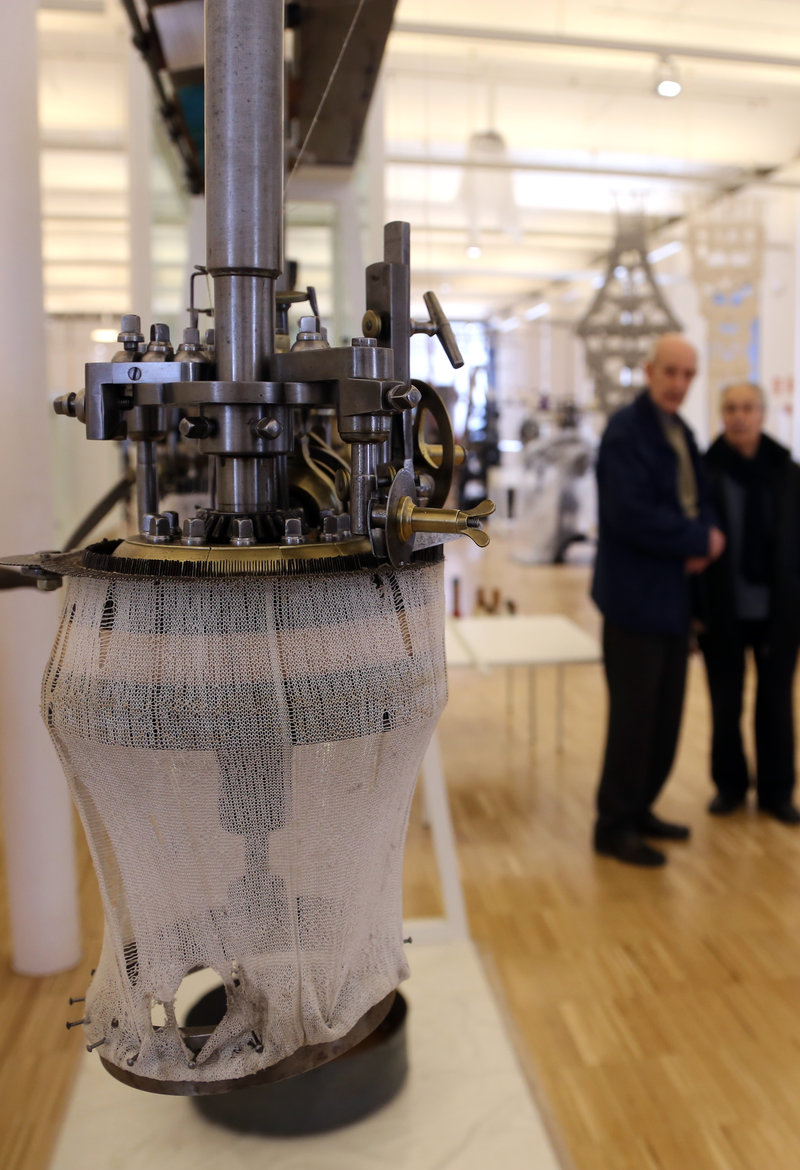Manufactured memory
The Can Marfà industrial complex in Mataró is the site for the new Museu del Gènere de Punt, the only textile museum specialising in knitted fabrics
Some 230 items are on display
A small factory in the industrial complex of Can Marfà will once again produce textiles. What was once the site of the most important textile company in Mataró has finally been converted into the Museu del Gènere de Punt. The new textile museum is unique in specialising in the industry that used to be the economic basis of the Maresme capital and the surrounding towns in the county.
The museum has a permanent exhibition, Mataró capital del gènere de punt (Mataró, capital of knitted fabric), which occupies the first floor, where 230 objects and documents from the city's textile history are on display: “This is only a small sample from our collection,” says the president of the Fundació Vilaseca, Pere Vilaseca. The plan is to fill the second floor with textile machinery in order to hold educational workshops for schools, as well as making the museum's extensive archive of documents available: “We cannot put all of the machinery given to us on show,” says Vilaseca.
In 1996, the Fundació Vilaseca came to an initial agreement with the council to take possession of the city's collection, but it was not until 2013 that the agreement became definitive and the museum became a reality.
Stockings to sacks
The museum exhibition guides the visitor between the building's original cast iron columns and the looms that have now been returned to their original location. At the beginning, an audiovisual presentation provides an overview of the historical and technological development of the textile industry with original images of the city's factories. The machinery in the museum shows how the stockings, vests, tights and even sacks for potatoes were manufactured. Among the oldest items on display are machines from Olot, which was also once a thriving textile centre.
The tour continues with sewing machines showing the changes in dressmaking, and ends with an overview of the textile industry today. Weaving remains important for Maresme, above all in design and technological innovation, as can be seen in the intelligent fabrics designed by the Cetemmsa technological centre, located on Mataró's Tecnocampus.
Optimistic figures for the textile industry
The latest report from the Observatori de Desenvolupament Local, the development watchdog of the Consell Comarcal del Maresme, suggests that the local textile industry is recovering, albeit very slightly. The figures for 2014 show, after years of decline, a rise of 5.67% in employment. The report also shows a rise in the number of companies of 4.47%, though most are micro-businesses. Redundancies are also down; last year 124 workers lost their jobs, a decrease compared with previous years. The data used for the report came from the Generalitat's business department and from the Diputació's INSS-SITDEL programme. Yet the chairman of the textile guild, Paulí Aluart, is cautious about the figures: “The only good news is that despite the crisis, textile companies are no longer closing,” he says. Aluart thinks it is too much to say the industry is growing: “I wouldn't be so bold as to say that,” he says.

